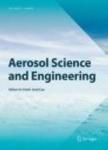版权所有:内蒙古大学图书馆 技术提供:维普资讯• 智图
内蒙古自治区呼和浩特市赛罕区大学西街235号 邮编: 010021

作者机构:Amity Univ Uttar Pradesh Amity Inst Environm Sci Noida India Cent Pollut Control Board CPCB Delhi India Acad Sci & Innovat Res AcSIR Ghaziabad India Univ Petr & Energy Studies UPES Sch Adv Engn Dept Phys Dehra Dun India Univ Petr & Energy Studies UPES Sch Comp Sci Dehra Dun 248007 Uttarakhand India
出 版 物:《AEROSOL SCIENCE AND ENGINEERING》 (Aerosol sci. eng.)
年 卷 期:2025年
页 面:1-11页
核心收录:
主 题:Correlation Ozone levels PM10 Statistical analysis Temperature Urban regions
摘 要:Study investigates the relationship between PM10, ozone and temperature in Delhi s metropolitan areas, a densely populated and industrialized city with significant air pollution problems. Understanding the complex interactions between PM10 and ozone concentrations and climatic variables is the study s main objective. The data included PM10 and ozone concentrations as well as daily readings of the temperature, relative humidity, and other relevant meteorological factors. Regression modelling and correlation analysis is used to examine the relationship between PM10, ozone concentration and temperature. Machine learning approach is used to forecast the Ozone, PM10 and temperature by using the algorithm of auto regressive integrated moving average (ARIMA). Preliminary data indicates a clear relationship between ozone, PM10 concentration and temperature in Delhi s metropolitan areas. The results demonstrate a substantial correlation between these variables, where higher temperatures are linked to higher ozone concentrations and lower PM10 concentrations. Precursor pollutants are implicated in heat-induced photochemical reactions that culminate in the synthesis and deposition of ozone. Study examines the influence of several meteorological factors, such as solar radiation and relative humidity, on the relationship between ozone, PM10, and temperature by observing their past and predicated trends through the years 2018-2026. ARIMA model is used to forecast ozone, temperature, and PM10 levels in Delhi s urban environment that shows good accuracy. The predictions indicate a significant rise in ozone and PM10 concentrations in the coming years, highlighting the urgent need for effective mitigation measures to maintain air quality within national and international standards.